Order of Battle: World War II is a deep, strategic war sim – but is it too opaque for console gamers?
Whether on the tabletop or in digital form, I’ve always loved turn-based games. From Risk to modern miniatures games like Battle of Pelennor Fields, I enjoy everything from grand, strategic endeavours to more tactical encounters. This gives me a natural predisposition towards games like Slitherine Studio’s Order of Battle: World War II, which is a “free to try” episodic hex-based wargame that has just been released on console.
To take you back a few years—- 25 or so — to the first time I saw a game like Order of Battle: World War II on a console. That game was one of the Panzer General games, released on the PS1. I bought it in good faith and tried my best to understand it, but alas, my thirteen year old brain couldn’t concentrate on that much pixelated brown for long enough to see through the mud and reveal the — apparently rich — systems that lay hidden beneath.
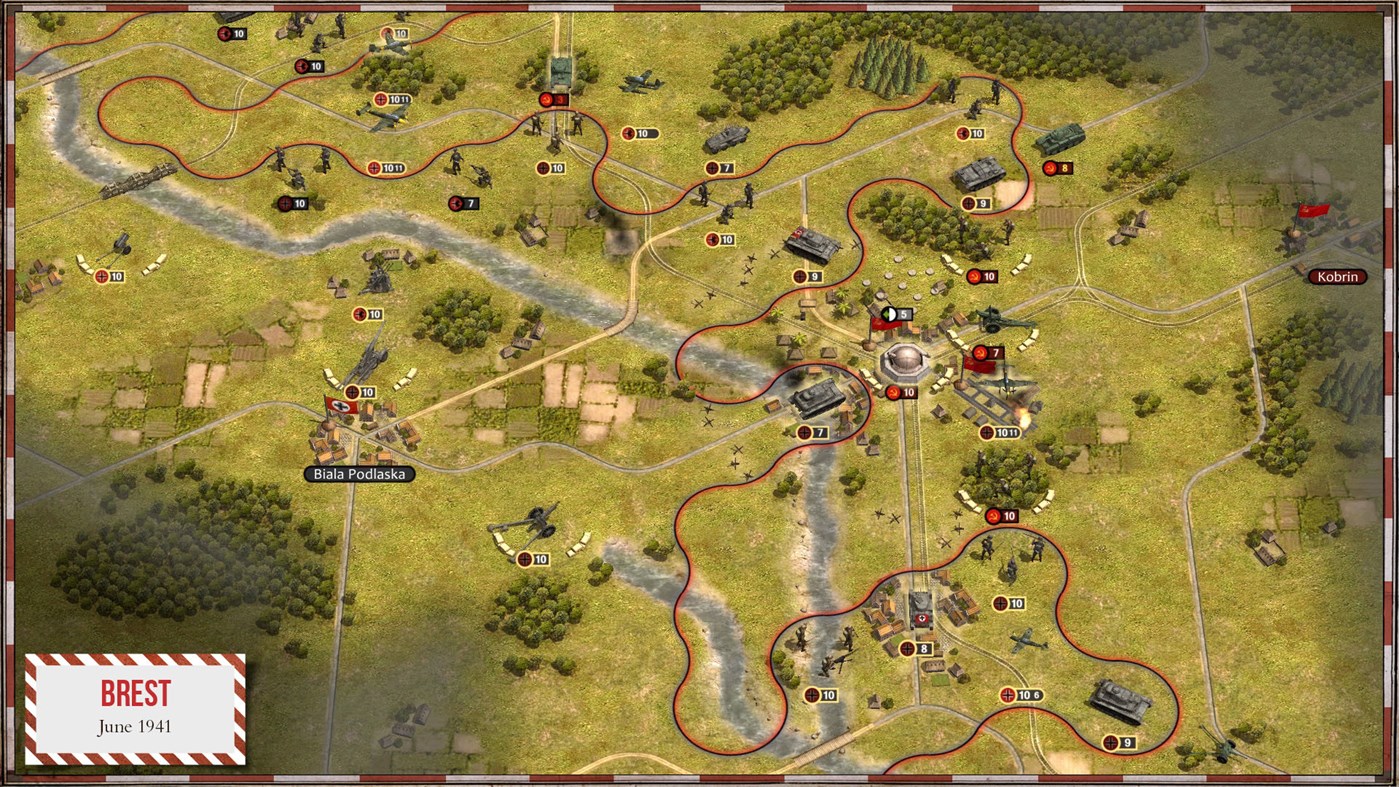
And, honestly, Order of Battle: World War II makes me feel the same way. On the Xbox One Series X it looks marginally better than Panzer General did back then, but it does very little to entice the player with its visuals. Static loading screens featuring airplanes with guns blazing and ships firing their main batteries are rousing enough, but the in-game graphics are very run of the mill.
Thankfully, there are two visual aspects that work well. Firstly, each unit is relatively easy to tell from other similar units. A Panzer III, for example, is clearly smaller than a Panzer IV and a heavy infantry unit is equipped differently to a rifleman. A rifleman unit and a group of marines? Less so, but an information panel at the bottom of the screen helps clear up any confusion when a unit is highlighted.
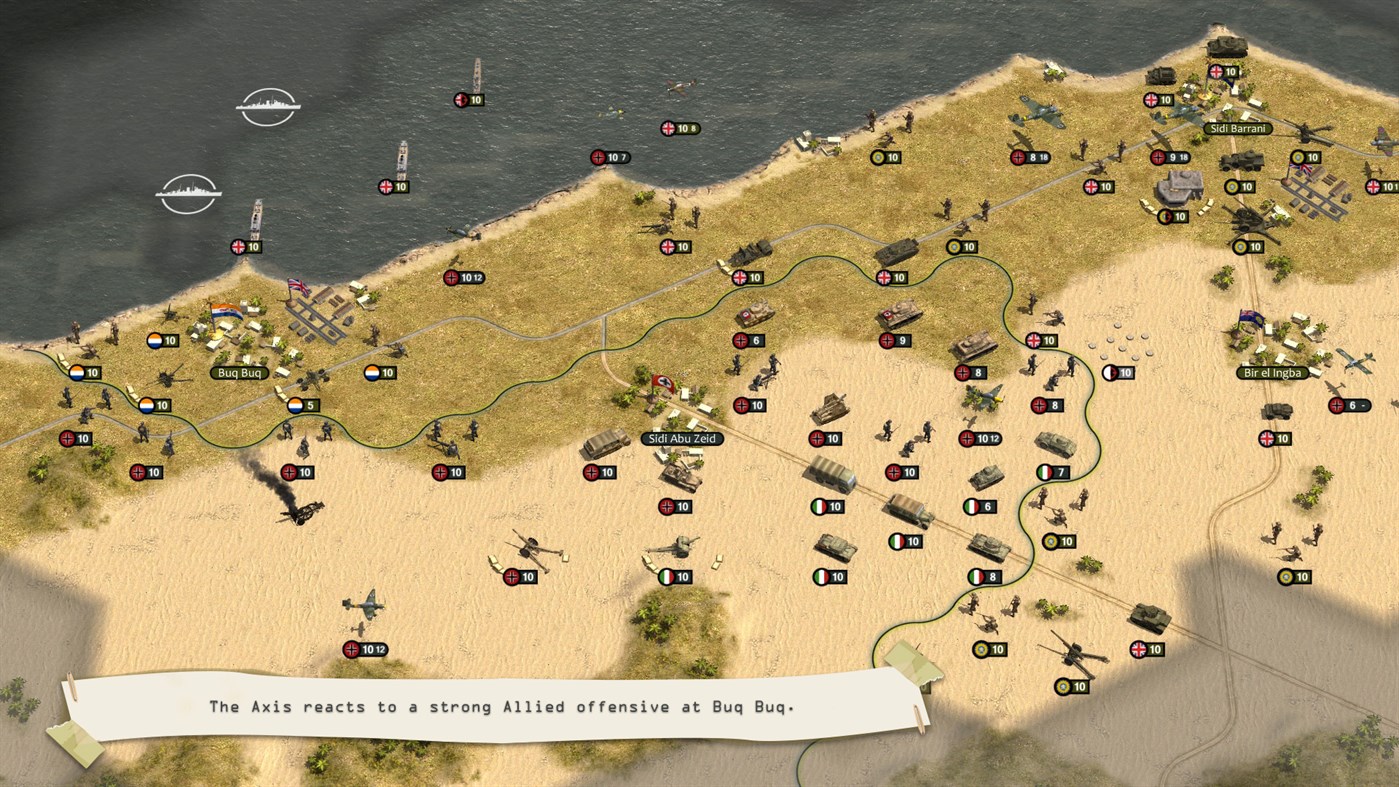
The other thing which Order of Battle: World War II excels at — and this surprised me — is the scale of its maps. As someone used to console based strategy games, I’ve come to accept compact maps that leave little room for battalion level flanking maneuvers and complex combined arms approaches. Order of Battle: World War II has this in spades, with some maps proving to be absolutely huge.
As is often the case, there’s another “but” coming here, and in this case, despite the very basic graphics, Order of Battle: World War II performs embarrassingly during AI turns on console. Whenever the “thinking” dialogue appears at the bottom of your screen, you can be assured that on any map of any size, the game will chug to a grinding halt that makes it very difficult to watch and track enemy counterattacks.
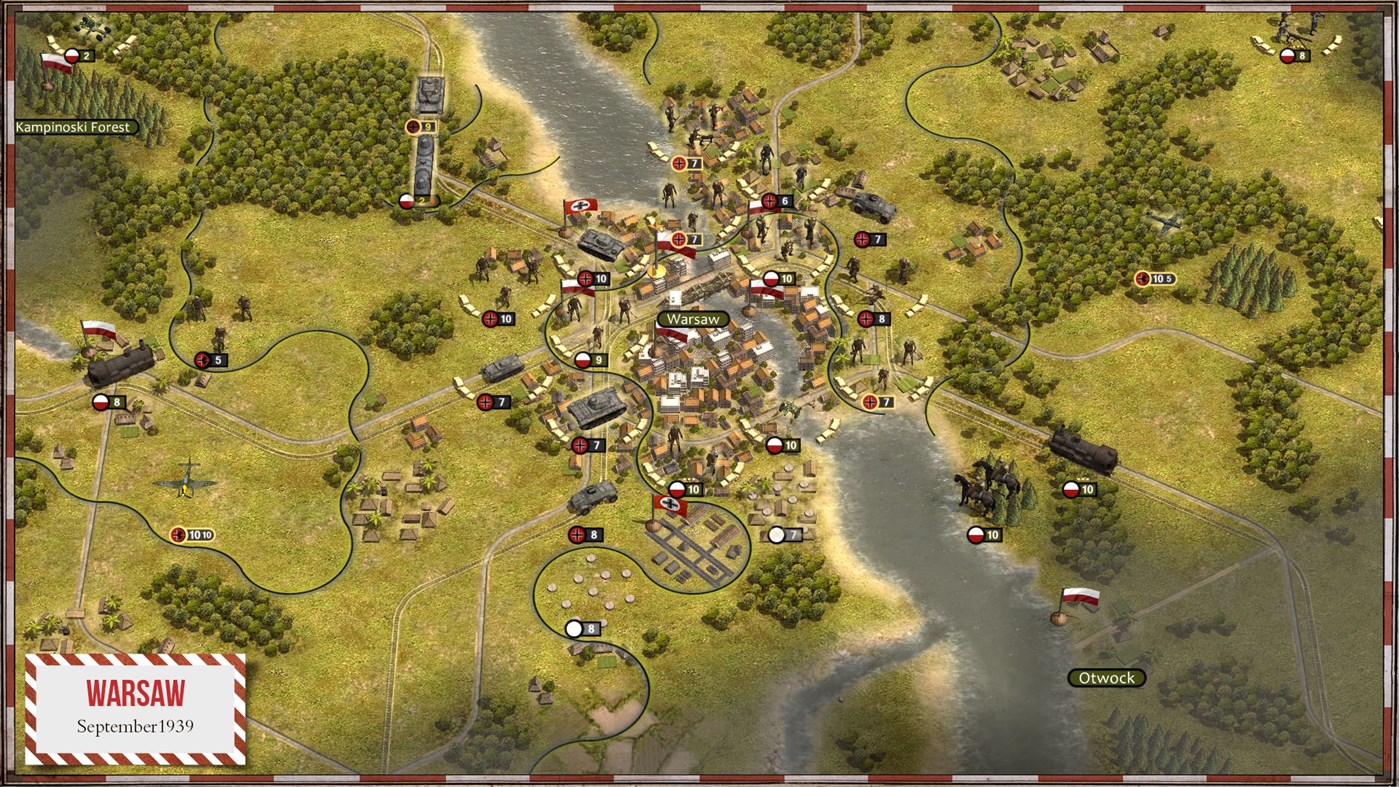
All of this is kind of peripheral though, in honesty, compared to the quality of the gameplay. No one has ever bought a turn based strategy game because of how it looked, right? Anyway, there is definitely a glimmer of hope here — but just as in Panzer General, it is deep, deep under the mud. Order of Battle: World War II tells you almost nothing about what you need to know, even with a lengthy tutorial spanning three sizable missions.
Even though the game never tells you so in a way that is evenly remotely structured or helpful, each unit has a number of different stats that affect how it moves, how it attacks and how it defends. Simply, this might mean that a unit of infantry is good at fighting other infantry, but perhaps not so good at damaging armoured units. It is, in theory, all self-explanatory — or so you would think.

The trouble is that as the usual modifiers come into play — terrain, flanking, being under fire from artillery etc — Order of Battle: World War II starts to throw up unusual results. This is compounded by one of Order of Battle: World War II’s better ideas — that of units needing to remain “in supply.” Being in supply effectively means that the player will need to maintain control over hexes between their units and the nearest supply base (or supply vehicle) that they control.
Failure to remain in supply will result in a reduction in unit efficiency. Equally, being suppressed (as per the previous example) has a similar effect. These effects are represented by the colour of a unit’s strength — with white being “fine” and yellow through orange to red indicating worsening to bad. A strong unit that is operating inefficiently is more or less as weak as a weak unit that is well supplied and content. Other factors like fortification (the longer a unit is still, the more fortified it becomes) also play a part.
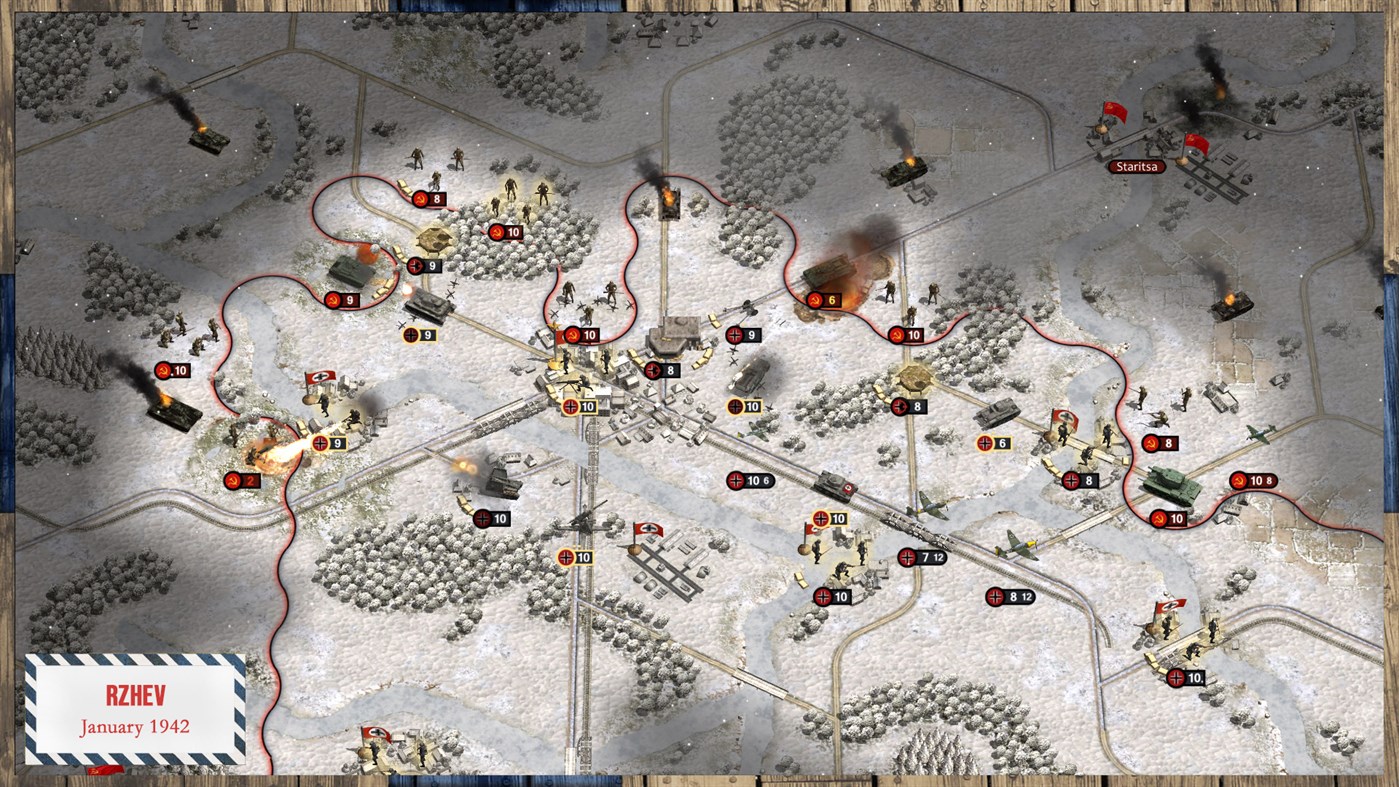
The problem with all of these modifiers is that you won’t have a clue which ones are affecting your units or the enemy. This was compounded in my second mission (of the tutorial campaign) when one of the randomised tooltips on a loading screen helpfully mentioned that “warships are more efficient if an enemy ship is at the same range at the end of your move, as it was at the beginning.”
Excuse me? Well thanks for letting me know… No wonder that every time I go to move a ship I have to cycle through every space near an enemy to see which show the most favorable battle outcome. What does that even mean? Is it a representation of how naval guns are calibrated? If so, fine, but in a real battle a destroyer can’t circle a completely stationary and passive battleship at the same range to get the best shot. Anyway, whatever.

Other examples are more common on land, where modifiers are more frequent. I swear to God that the match ups make no sense at all to me. Play Order of Battle: World War II enough and you will simply get a “feel” for how to safely engage an enemy and overwhelm them. Often this involves taking it slow, ensuring battles are two units versus one, using different mixtures of tanks and infantry. At first though, every one on one encounter will be inexplicable — whether it goes in your favor or not.
Another issue came to light for me during the very first mission of the main, free to play campaign. This one centres on the German advance into Poland at the start of the war — the one we often call the Blitzkrieg. In true Blitz form, I recruited tanks and attempted to rapidly cross the Polish countryside — despite the fact that the resilient Polish had already blown the bridges. No matter, German engineers can build pontoon bridges, or even repair the main bridges given time.
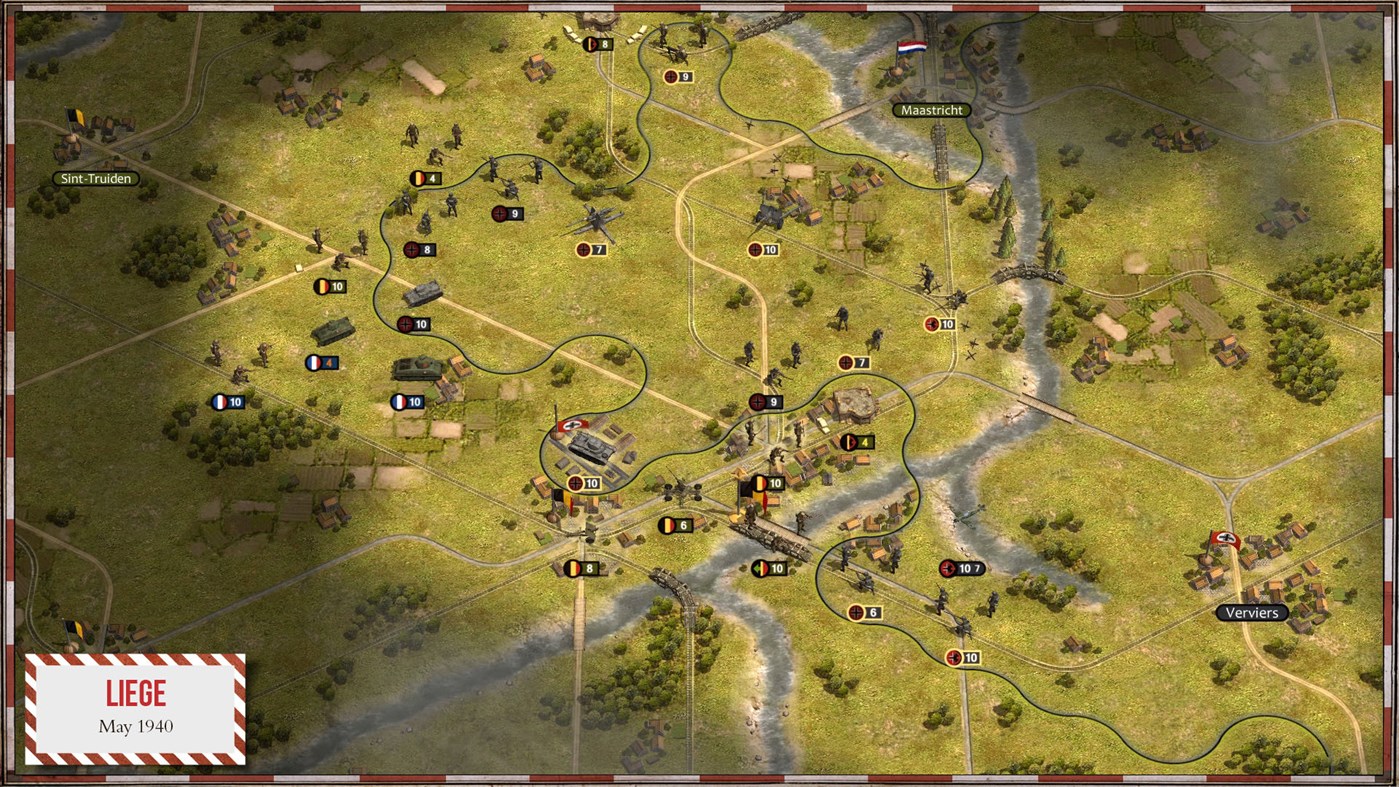
This combined arms strategy took me successfully to a storming first half of the mission — with Polish bunkers and supply bases falling in rapid succession. As I pushed on into the second half, however, even my terrifying Panzer IV’s began to lose efficiency and in one pivotal moment, one unit was forced to retreat by a Polish cavalry unit — a match up that’s almost as ridiculous as the fondly remembered spearmen triumphing over modern armour days of Civilization IV.
I can sum up the density of Order of Battle: World War II by saying that even though I finished that mission and moved on through the campaign, I still to this day do now know why my entire force lost efficiency in that one battle. We had supply lines, we had forward supply bases, and my units engaged the enemy in a line of battle that held and left no room for the Polish to outflank. It made no sense — and it still doesn’t.

Despite all of these negatives — and there are a lot — I have willed myself through the whole of the tutorial and German campaigns in Order of Battle: World War II, because I want it to work so badly. Despite the rubbish graphics and the intense slowdown, and even though the systems collide against each other in the most jarring of ways, when it does work, Order of Battle: World War II is just great.
The sheer scale of the battles, the number and variety of units involved and the complex, challenging missions really give the player credit. For someone who takes the time to figure out the systems (better than me) or who can at least work around them (which is me) there’s a lot of enjoyment to be had here. Taking control of even one section of the battlefield against the odds feels like a victory in Order of Battle: World War II, because even though they sometimes break, the underpinning systems make you feel like you’re really commanding a large force — and facing all of the challenges that come with that.
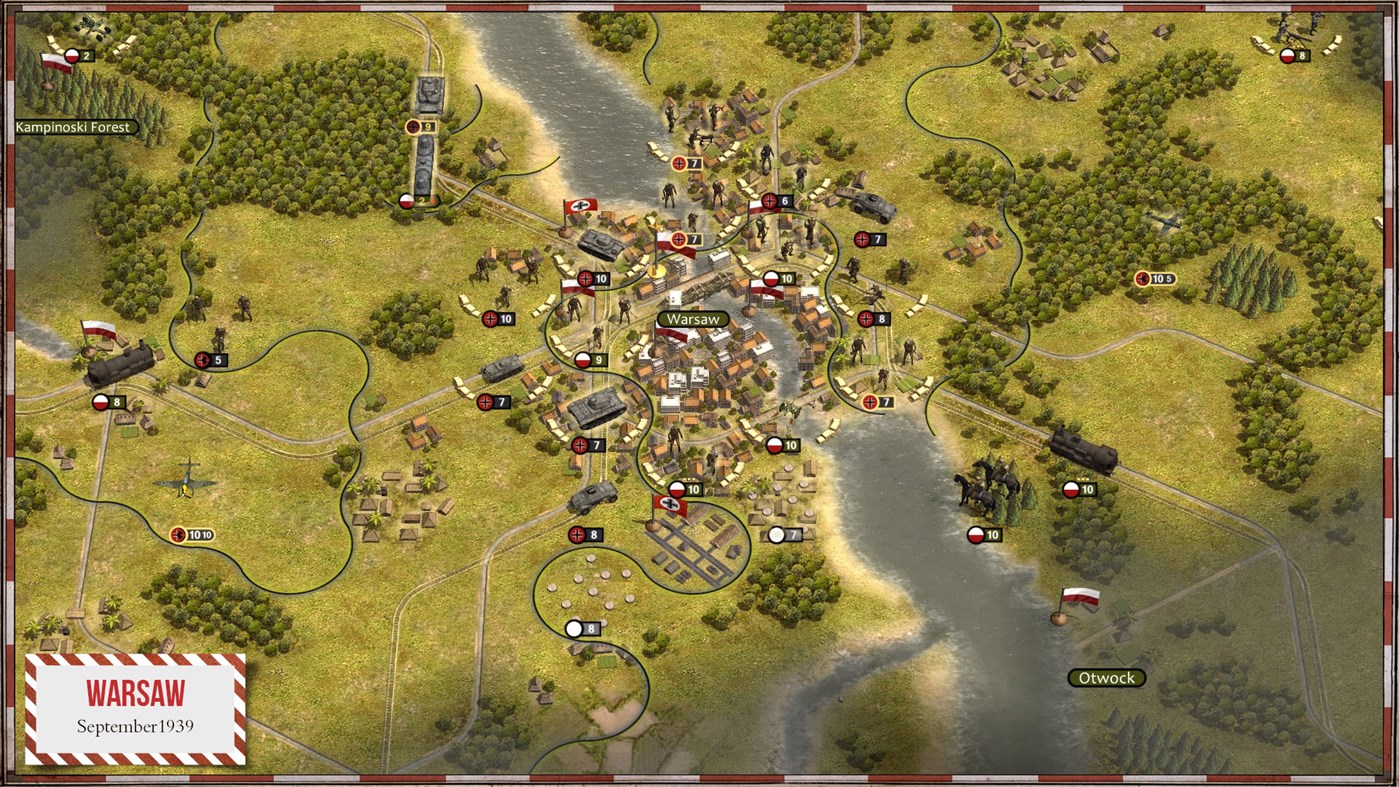
So in short, Order of Battle: World War II is not everyone. In fact, it’s probably not for even half of us — hell, I am a fan of this genre and I almost gave up several times. For those who stick around though, Order of Battle: World War II can be rewarding, and if you do like it and want to go beyond the free campaign, then there are maybe another ten you can buy for between five and fifteen quid each. It’s good value if you pick up just one or two of these, but it’s exceptional value if you just take the free campaign.
You can find Order of Battle: World War II on PC and Xbox One.
The reason your units lost efficiency in the first polish mission was likely due to artillery fire. You or those of you reading may wonder why artillery, strategic bombers, or battleships do next to no damage to soft targets like infantry. It’s because they target thier supply and efficiency. They break down fortification stats (sandbags). And generally bog them down. I had to track down the pc manual to figure this out. It’s an absolute crime the manual wasnt translated over to consoles.
Here is the link to the manual on steam
https://cdn.akamai.steamstatic.com/steam/apps/312450/manuals/SLIT_OoBP_Materials_Manual_Ebook.pdf?t=1627995269
The reason your units lost efficiency in the first polish mission was likely due to artillery fire. You or those of you reading may wonder why artillery, strategic bombers, or battleships do next to no damage to targets like infantry or tanks. It’s because they target thier supply and efficiency. They break down fortification stats (sandbags). And big those units down.
Supply isnt black and white. Your supply points come from the villages and towns your flag occupies. If an enemy unit cuts off the route to your nearest supply ship. Town, ship, etc. You lose efficiency. This can be done by just occupying one of the hexes that traces back from your unit to the source. This is why its important to keep armies together. Multiple units cut multiple paths thru uncharted land. But only one unit moving alone will create a single hex path bact to the source. Even though all the villages create a supply pool for you. You have to have a traceable source to each unit.
Also to answer your question about the ship on ship battles. The same hex distance when moving is to simulate the fact ships would turn to theirs side for a fall broadside attack. Using all of the guns. The game assumes that if you made a movement that left your ship (and not necessarily the angle of the enemy ship) in the same position. You remained in the broadside posture. But if you had to go full steam ahead you had to turn to get out in front of it. Leaving half or no guns with the shot.
I had to track down the pc manual to figure all this out. It’s an absolute crime the manual wasnt translated over to consoles.
Here is the link to the manual on steam
https://cdn.akamai.steamstatic.com/steam/apps/312450/manuals/SLIT_OoBP_Materials_Manual_Ebook.pdf?t=1627995269
Thanks mate – that’s all very useful info and definitely may apply to some/all of the situations. The shit bit makes sense to me, though to be honest I didn’t get the “sense” that each move was meant to simulate real time conflict – I more felt that (as with hex and counter wargames) a move might translate to “half a day” or similar, and therefore the ability to position guns correctly would be factored in. Nonetheless what you say makes sense.
I do agree regarding the manuals, but I have to review what is presented and not what I can divine on my own. I think the key thing is – this is a good game and could have been great, but on a console especially, a level of guidance is required and perhaps some better tutorials or tooltips would have got it done.
I thank you for your feedback!
Yw. It really isnt meant to simulate real conflict. Most units would be comprised of a mix of infantry types and armor. This is more of a beer and pretzels type of strategy game. More or less a 90s panzer general clone. With a few common rules from more hardcore games sprinkled in to spice it up.
For the benefit of your readers I’ll also like to note that the reverse is true for ship battles. You’ll notice in the loading screen tips that if you consume more movement points you’ll take less damage. This is to simulate that if you are retreating you are turning your broadside away from the enemy making yourself a smaller target.
Also there are certain terrain type hexes where artillery and ship bombardment do more damage. Like towns and forests hexs especially. This simulates falling debris that strike soldiers while in cover like broken trees.
Also artillery is more powerful as a defensive weapon. Placed next to your unit. It will help defend a unit that is being attract provided it is adjacent. Simulating the attacking enemy has come from put of cover to make a move and is therefore a more visible target.
Why are the combat results never as advertised? It may a 4-1 loss for me but when I attack I get maybe one maybe two with a superior unit. I don’t get it.
I believe you also lose efficiency by just repeatedly attacking with a unit every turn whether in supply or not. Giving your guys a breather for just one turn helps a lot though if your efficiency is very low it will take several turns to restore completely (you can help them along if they have taken casualties by adding reinforcements/replacements too.